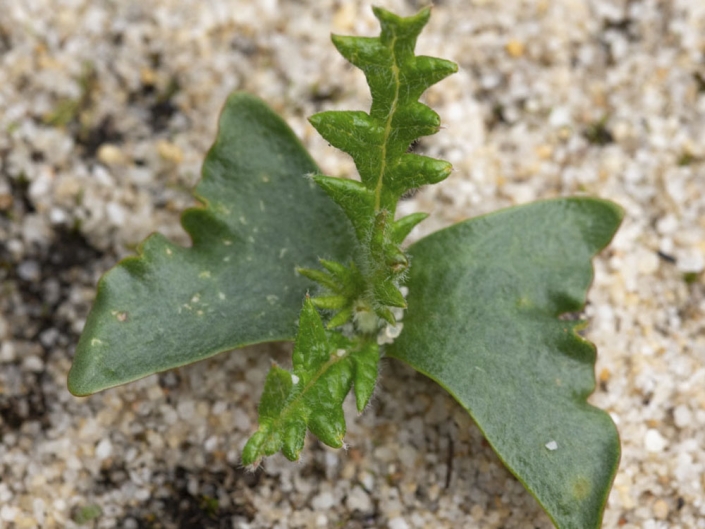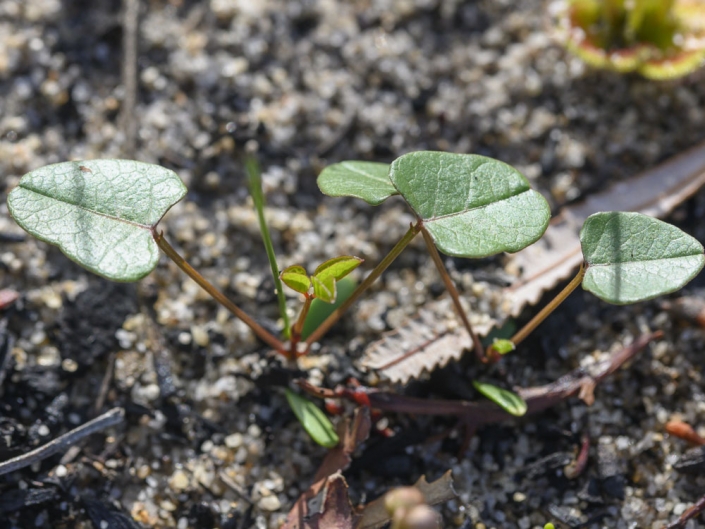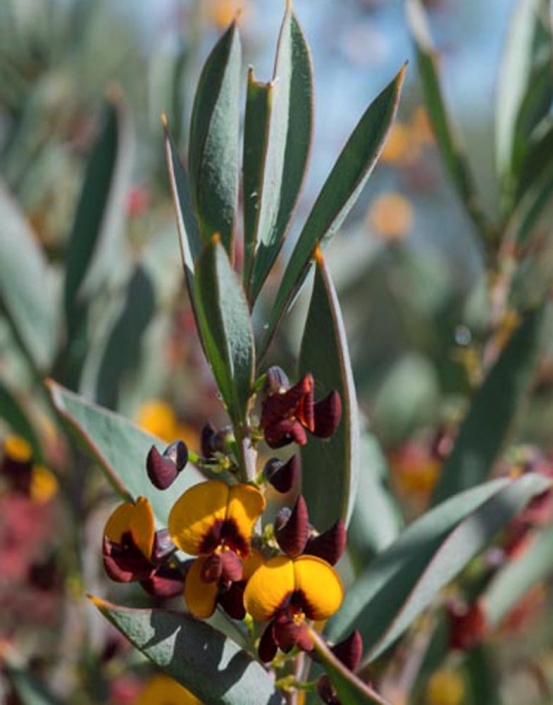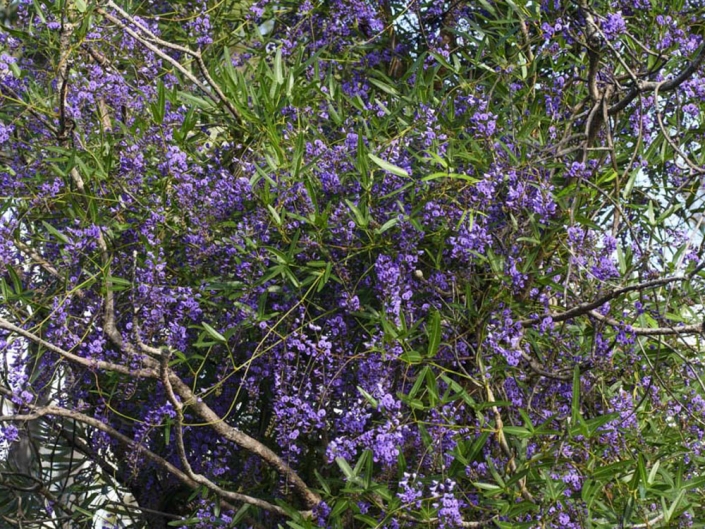Point of Interest 13: Western Part of Trail
Jarrah groves are present on both sides of the trail surrounded by scattered banksias over shrubs and herbs. Native irises and Bloodroots are common in this area, but freesias (weeds) are spreading in areas close to the track.
Common Wildflowers
Spring – Milkmaids, Morning Iris, Hairy Wedge Pea (Gompholobium tomentosum)
Late Spring & Early Summer – Purple Flag, Bloodroots (Haemodorum laxum & H. spicatum), Petrophile linearis, Pom Poms (Ptilotus manglesii), Fragrant Waitzia (Waitzia suaveolens), Eremaea pauciflora
Focus Topic 27. Seedlings after Fire
Seedlings of trees, including banksia and eucalyptus species, are often found after fire due to the release of canopy seed when branches supporting woody cones or fruit are killed. There were also many seedlings of shrubs and herbs in this area, including pea plants such as Native Wisteria, Running Postman, Daviesia species, etc. These are stimulated to germinate by heat which cracks their very hard seed coats. The most common example here is the Hairy Yellow Pea (Gompholobium tomentosum), a small shrub with abundant yellow flowers. Acacias, especially Orange Wattle (Acacia saligna) and Prickly Moses (A. pulchella) also tend to become more dominant after fire due to germination of hard seeds, as well as resprouting. The second major category is seedlings of plants belonging to the soil seed bank, where long term seed dormancy is broken by smoke or heat. These include Kangaroo Paws, Cats Paws, Cottonheads and many others.
Some native plants are more productive after recent fires, producing numerous flowers. These include Needlegrass (Austrostipa compressa) which germinates readily after fire and can be dominant in the first year. Seedlings of annual plants were also common including Trachymene pilosa and everlastings. A few orchid seedlings were also found after fire in this area. Unfortunately fire also stimulates growth and reproduction of many weeds (Focus Topic 26).























